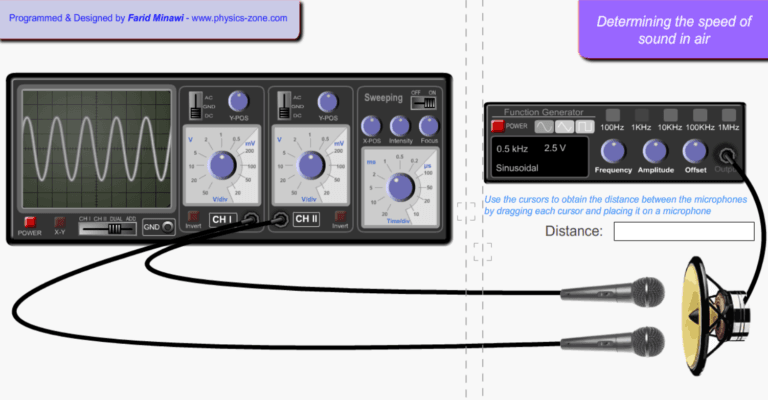Phase Difference Between Sound Waves Simulation
Description:
This interactive simulation helps you visualize and measure the phase difference between two sound waves using two microphones connected to an oscilloscope. A sine wave generator provides a controlled frequency, and by adjusting the distance between the microphones, you can observe how the phase shifts on the waveform display.
When the two waveforms align in phase, you can use the known frequency and microphone spacing to calculate the speed of sound in air. This experiment provides a hands-on virtual lab experience for understanding wave behavior, sound propagation, and phase relationships.
For more information about this simulation go to:
Simulation Manual: Phase Difference Between Sound Waves.





